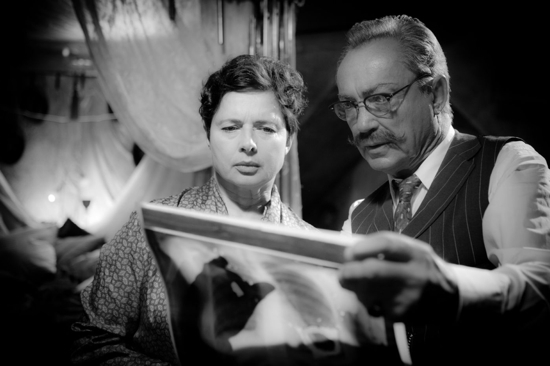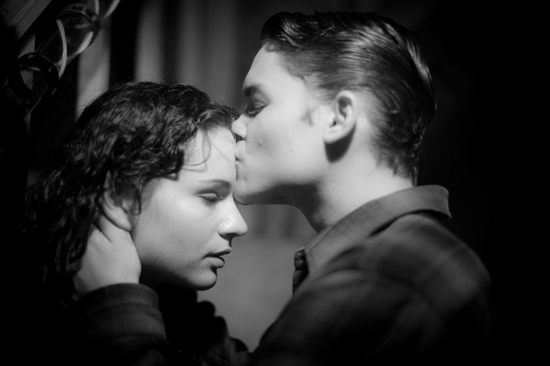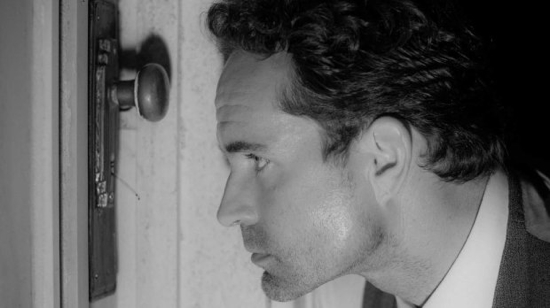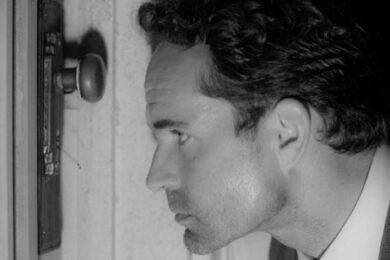Part retelling of Homer’s Odyssey, part mobster movie, part haunted house horror. You’d be hard-pressed to find a genre in which to situate Keyhole, but apparently there is one. The press release talks about the "admittedly rare… gangsters-in-a-haunted-house genre", citing The East Side Kids’ 1941 B-movie Spooks Run Wild as one of the chief inspirations behind Guy Maddin’s ninth full-length feature. But though it may have provenance, this strange film could not have come from anywhere else but the Winnipeg-based director’s head.
A dedicated cinephile, Maddin frequently pays homage to dead and gone directors by pastiching their work in his own, and Keyhole is no exception. Shot in black-and-white, it opens with what seems to be some sort of stickup: a gun-wielding, slang-slinging gang enter a dilapidated old mansion in a shower of bullets. However, the plot soon thickens – or rather refuses to develop into a coherent plot at all. We are, in fact, witnessing the glowering, granite-jawed anti-hero, Ulysses Pick (Jason Patric), breaking into his own house after a long absence, dragging a bedraggled, half-dead drowned girl (Brooke Palsson) and a bound and gagged boy (David Wontner) with him. He is coming home to his estranged wife, Hyacinth (Isabella Rossellini), who is upstairs in the marital bedroom with his archrival, Chang (Johnny Chang).
Hyacinth is not the only relative waiting there for him. There is also an extended family of ghosts, installed in various locations around the house. A deceased adolescent son is condemned to masturbate furiously in the cupboard beneath the stairs for all eternity; a former gang member must forever dry hump the maid as she blank-facedly continues to scrub the landing floor; and the ghost of Ulysses’ father-in-law is chained, stark naked, to Hyacinth’s bed.
Death does not seem to have deadened the carnal appetites of the dead, which is unfortunate for the viewer, who must suffer through a scene in which the elderly father-in-law fellates a dusty phallus protruding through a wood panelled glory hole in the hallway. But enough with the smut – Maddin did not introduce ghosts for merely crude comedic effect. They represent the repressed memories and feelings which Ulysses must revisit. He is returning to a home that that has become unheimlich, in a kind of literal enactment of Freud’s theory of the uncanny.
As the naked father-in-law puts it: "Happiness in a house is free to go, but sorrow can never leave." But it’s not only the ghosts who are trapped within Ulysses’ haunted house, as the action in Keyhole takes place exclusively within the crumbling confines of its walls. Outside, the wind blows and the rain pours, providing a background soundtrack that’s as maddening as tinnitus.

Inside, Ulysses tries to find his way back to his wife, who only communicates with the world outside her bedroom through the keyhole in the door. Enlisting the assistance of the drowned girl, Denny – who, though blind and with lungs full of water, has attained an ability to ‘see’ into people’s memories of the past, and to ‘hear’ their thoughts – Ulysses eventually reaches his goal. It’s at this point that the focus switches to the boy, Manners, whom Ulysses fails to recognise as his son. Unable to escape through the locked front door, Manners stumbles through his family home, slipping between sleep and wakefulness, increasingly unable to distinguish which is which.
It’s a state that the viewer will probably be able to identify with, as watching this movie does feel a bit like being trapped in a dream from which you cannot wake up. It is compulsively repetitive. The plot wanders and stalls, twists and turns back on itself, never seeming to make any progress or reach any conclusions. This evokes the uncanny atmosphere of a nightmare, which is heightened by the cinematography. Having previously favoured the grainy, anachronistic look of Super 8 and 16mm film, Maddin has now embraced new technology: Keyhole is the first film he has shot entirely digitally. But though he may have moved away from his trademark "vats of Vaseline" look – as exemplified by The Saddest Music In The World (2003) – the moody, shadow-obscured lighting in Keyhole nevertheless makes for a disorientating experience, as though the sleep is still stuck in the corners of your eyes.

Stylized cinematography is not its only familiar characteristic; the repetition mirrors the repetition within Maddin’s oeuvre as a whole. Not only does Keyhole feature the same kind of pastiche techniques seen in the writer-director’s previous work, plus one of his regular stars (the marvellously melodramatic Rossellini), it also explores many of the same themes: unhappy relationships, memory, the pull of family and home. My Winnipeg (2007), for example, was a heavily autobiographical piece about a young man trying, and failing, to leave his home town – a concept closely echoed in Manner’s attempts to leave his parents’ house.
Guy Maddin has stubbornly, obsessively pursued his own vision for the past 26 years. He has produced some wonderfully singular films, equal parts baffling and beautiful. But Keyhole is perhaps a little too inward-looking, a little too claustrophobic; too preoccupied with the ideas inside his own head, with too little regard for the comprehension of his audience. It feels as though the director has become almost as trapped inside the world he has created as his characters are trapped inside the haunted mansion he built for them. But with hints being made that Maddin’s next feature will be in colour, perhaps there’s hope that he’s about to open a window and let some light in.



